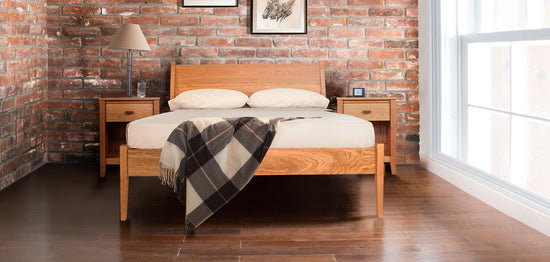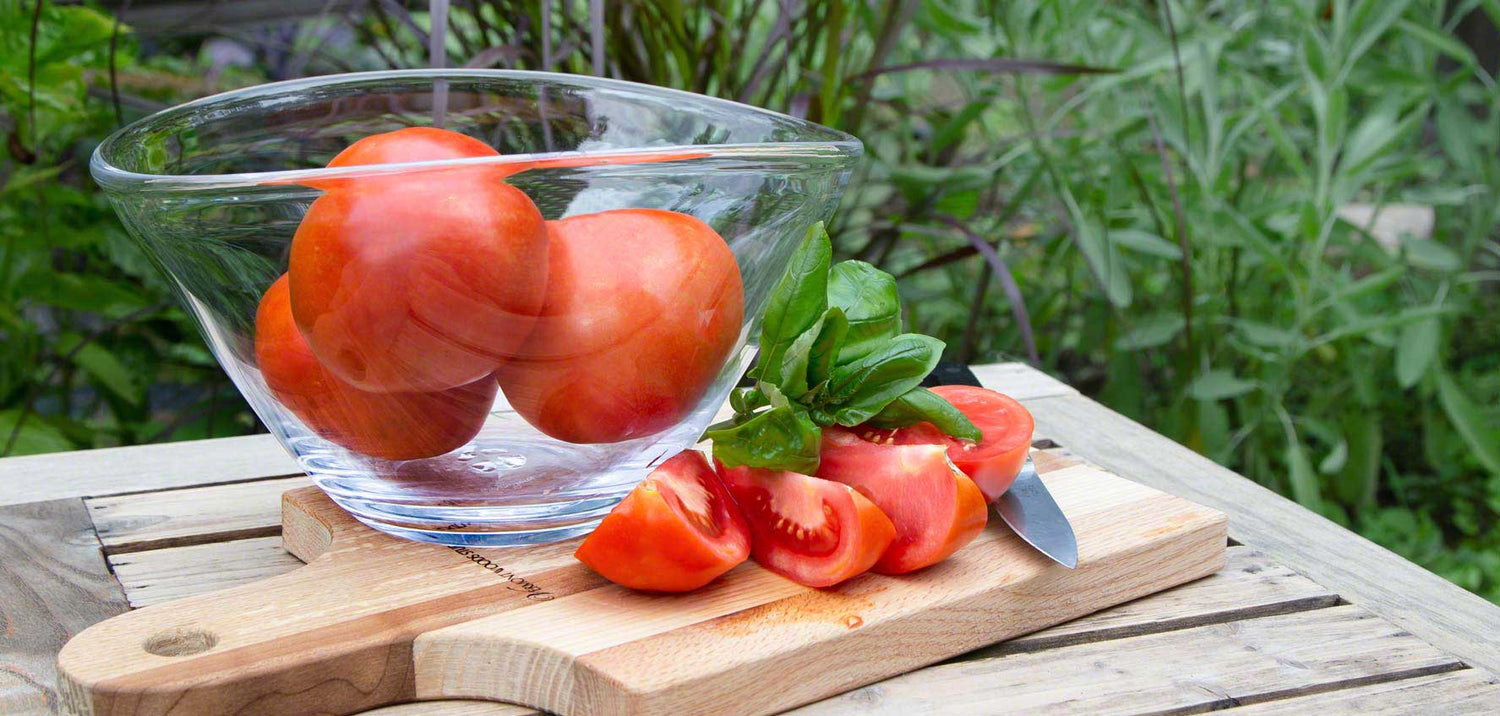Mineral Oil
Mineral oil is an umbrella term that describes an odorless and colorless substance with a variety of uses across many different industries. As a wood finish, food-grade mineral oil is commonly used on kitchen products like cutting boards, wood spoons, and rolling pins.
Mineral oil is used as a catch-all term to describe an oil with higher alkanes (nine or more carbon atoms) that is derived from a mineral source, usually petroleum. This affordable and versatile oil comes in two forms of purity: non-food grade oil and food-grade oil, and it is used across a variety of industries, including health, beauty, science, agriculture, and auto.
Mineral Oil Used as a Wood Finish
When mineral oil is used on wood products, it’s usually chosen because of the need for a non-toxic, food-safe oil finish that is easy to apply and doesn’t go rancid. Like other oil finishes, mineral oil seeps into the wood grain to offer a bit of protection against changes in humidity, which makes the wood less susceptible to cracking or warping. It also enhances the aesthetic of the wood by adding volume to the grain and enhancing the natural color of the wood.
Just keep in mind, this finish does not last forever and will have to be reapplied periodically to preserve the beauty and integrity of the wood.
As it pertains to wood products, mineral oil is most commonly used as a finish for butcher block countertops, wooden kitchen accessories (cutting boards, cooking utensils, serving bowls), and wooden baby toys. It’s also often used in combination with another finish, often times a wax such as beeswax.
Pros & Cons of Mineral Oil as a Wood Finish
-
Pros
- Easy to Apply
- Higher Purity is Non-Toxic & Food Safe
- Brings Out Natural Grain
- Conditions Wood
- Doesn’t Deposit Color/ Skew Color
-
Cons
- Not Waterproof
- Not Overly Durable
- Doesn’t Protect Against Scratches
- Can Appear Dusty & Dry, If Not Maintained
Other Common Uses of Mineral Oil
While mineral oil may not be the first choice for most wood furniture finishes, it has several other applications. Here are some of the common uses for mineral oil across various industries:
- Beauty: A skin moisturizer in the form of baby oil (aka perfumed mineral oil)
- Health: A laxative for pets and humans
- Science: An overlay for Petri dishes in IVF and related procedures
- Mechanical: A non-conductive coolant, lubricant, cutting oil, or jute batching oil
- Food: A preservative for wood cooking accessories and butcher block countertops
- Farming: A horticulture oil for pest control
Mineral Oil FAQ's
Is Mineral Oil the same as Mineral Spirits?
Is Mineral Oil the same as Mineral Spirits?
No. While the two are related, they are not the same thing and they are used for different purposes. For example, mineral oil is used to add a layer of protection to wood, while mineral spirits are used to take away a layer (thin paint, degrease, and clean). It is also worth noting that while some mineral oil is “food safe”, mineral spirits should never be used around consumables.
Is Mineral Oil Non-toxic and Food Safe?
Is Mineral Oil Non-toxic and Food Safe?
Yes. In its purest form, mineral oil is non-toxic and food-safe. That said, mineral oil with lower purity does not have these characteristics, so always buy oil from a reputable distributor and thoroughly read the label.
Where Does Mineral Oil Come From?
Where Does Mineral Oil Come From?
Mineral oil is actually more of a blanket term. It describes an odorless and colorless oil with higher alkanes (nine or more carbon atoms) that is derived from a mineral source, such as petroleum.
Which Craftsmen Use Mineral Oil?
Which Craftsmen Use Mineral Oil?
None of the furniture we currently carry is finished with mineral oil. However, we do use it on a few select cutting boards, rolling pins, and other wooden kitchen accessories available in our showroom.
How Do You Maintain a Mineral Oil Finish?
How Do You Maintain a Mineral Oil Finish?
Re-oiling when the finish appears dry, which will be dependant on the type of wood, temperature and humidity. Scratches and dents can be sanded out with a piece of high grit sandpaper or steel wool.
What are Some Mineral Oil Wood Finish Alternatives?
What are Some Mineral Oil Wood Finish Alternatives?
The most common alternatives to mineral oil include linseed oil, tung oil, and walnut oil. Similarly, these other oil finishes are also non-toxic and food-safe (in their raw form).
Learn more about oil finishes.
Read More on the Blog
-
5 of the Best Oil Finishes for Wood Furniture
Read MoreOil finishes are eco-friendly, food-safe, and non-toxic. They're also easy to repair and produce a more textured grain pattern than many alternatives.
-
Common Wood Finishes for Furniture & Flooring
Read MoreThere are lots of options for finishing wood, but when it comes to furniture and flooring, most products fall into one of these five categories.
-
Linseed Oil vs Tung Oil: What's the Difference?
Read MoreBoth linseed oil and tung oil– in their purest forms– are non-toxic, eco-friendly, and food-safe.
-
Raw vs Boiled vs Polymerized Linseed Oil
Read MoreRaw linseed oil is the purest form, but is sometimes impractical as a furniture finish due to the extended drying times
-
What is Boiled Linseed Oil?
Read MoreThe difference between raw linseed oil and boiled linseed oil is that there are drying agents added to BLO to shorten the time it takes for the oil to cure.
Other Types of Wood Finishes
-

Linseed Oil
More About Linseed Oil -

Tung Oil
More About Tung Oil -

Lacquer
More About Lacquer




